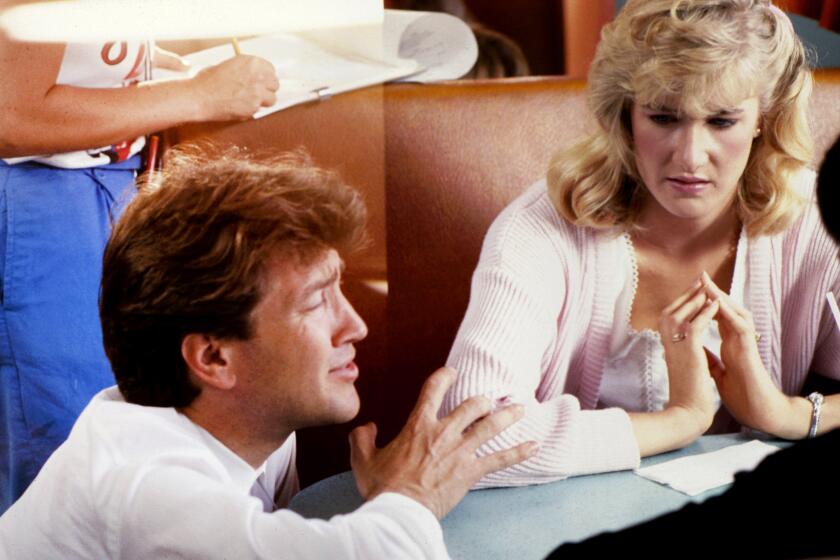From 1929 ‘Pandora’s Box’ Emerges a Lulu of an Actress
- Share via
The men in “Pandora’s Box” can’t get enough of Lulu, and it’s easy to see why. Played by Louise Brooks, she gleams with sexual promise, a beautiful, vivacious and stubbornly amoral woman.
If you’re not familiar with the actress, this is a film to see. G.W. Pabst, the director of “Pandora’s Box” (screening Friday night as part of UC Irvine’s “Love and Madness” series), rescued Brooks from a stalled career in Hollywood and turned her into a diva of the German cinema. He apparently recognized what Paramount (where Brooks was stuck in a nowhere contract) failed to--that she could light up the silent screen with cool eroticism.
Pabst saw the right opportunity to exploit that essence in Franz Wedekind’s turn-of-the-century play, which was adapted for Pabst by veteran screenwriter Ladislaus Vajda. The 1929 movie, like the drama, tells the story of Lulu, a young woman who turns men on without trying . . . and without realizing the consequences. She roams through Berlin driving guys nuts; it’s as if she carries a curse behind those glowing eyes, and every man who touches her is in for a fall.
If that sounds melodramatic, don’t be misled. “Pandora’s Box,” within the highly stylized framework of silent filmmaking, is a relatively subtle piece of work.
Pabst, who also directed other German milestones such as “Diary of a Lost Girl” (also 1929) and “Westfront 1918” (1930), was a craftsman with a delicate touch. Although he was later discredited as a Nazi sympathizer, the importance of his career in the late ‘20s can’t be disputed.
“Pandora’s Box” shows genius in several key scenes.
Shortly after we’re introduced to Lulu as the mistress of Peter (Fritz Kortner), a wealthy newspaper publisher, we’re shuttled to a musical revue with Lulu as the star. The onstage and backstage passages are shot with what only can be described as cohesive confusion.
Quick-cuts combine with evocative lighting to give an idea of the hubbub of the performance, all the while played against a backdrop of a passionate moral dilemma going on beyond the shadows. Peter, soon to be married, can’t resist Lulu, even as his fiancee waits for him in the wings. Peter guiltily embraces Lulu in a swoon; it’s a grasp he never escapes from.
Then there’s the claustrophobic, hellish scene on a gambling boat, where Lulu hides out after she’s convicted of manslaughter in Peter’s accidental death. The environment is symbolic of her slide into degradation. It also sets up the picture’s startling conclusion, where Lulu has a violent encounter with none other than Jack the Ripper. This last passage is widely considered one of the finest in silent movie history.
Pabst’s talents, and those of his cinematographer, Guenther Krampf, are obvious, but what keeps shining through is Brooks. It’s more than her loveliness; there’s something vivid and immediate about her that transfixes the audience. Even the danger of Lulu, especially her unprincipled sexuality, comes with a tinge of innocence--it’s as if Lulu can’t control the pain she inflicts, and that keeps us from turning away as the men drop left and right.
What: G. W. Pabst’s “Pandora’s Box.”
When: Friday, Oct. 15, at 7 and 9 p.m.
Where: Crystal Cove Auditorium at the UC Irvine Student Center.
Whereabouts: Take the San Diego (405) Freeway to Jamboree Road and head south to Campus Drive and take a left. Turn right on Bridge Road and take it into the campus.
Wherewithal: $2 to $4.
Where to call: (714) 856-6379.
More to Read
Only good movies
Get the Indie Focus newsletter, Mark Olsen's weekly guide to the world of cinema.
You may occasionally receive promotional content from the Los Angeles Times.







